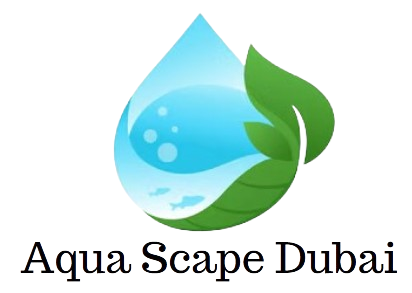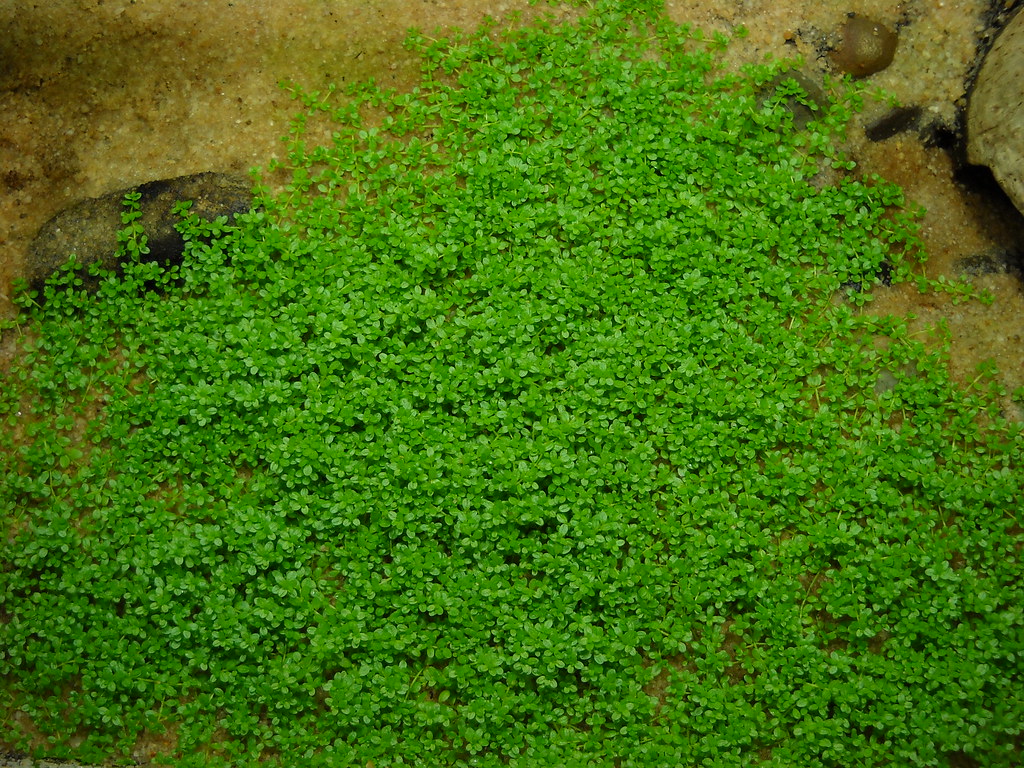Dwarf Baby Tears vs. Monte Carlo vs. Dwarf Hairgrass
Creating the perfect aquascape is akin to painting a living, breathing piece of art. Among the most crucial elements in this underwater tableau are carpeting plants, which lay the verdant groundwork of any aquatic landscape. These plants not only provide a lush, vibrant base but also offer shelter and breeding ground for many aquatic species. Among the myriad of choices available to aquarists, three stand out for their popularity and unique characteristics: Dwarf Baby Tears, Monte Carlo, and Dwarf Hairgrass.
Each of these carpeting plants brings its own set of benefits and challenges to the aquarium. Dwarf Baby Tears, with its tiny, delicate leaves, offers an intricate texture. Monte Carlo, a relatively new favorite among aquascapers, provides a lush, green carpet with minimal demands. And Dwarf Hairgrass, known for its tall, slender blades, creates a flowing underwater meadow. The decision between them can significantly influence the overall aesthetic and ecosystem of your tank.
In this discussion, we will delve into the specifics of Dwarf Baby Tears, Monte Carlo, and Dwarf Hairgrass. We’ll explore their growth habits, care requirements, and how they can be used to achieve various aquascaping effects. Whether you’re a seasoned aquarist or just starting out, understanding the nuances of these carpeting plants will help you make an informed choice for your next aquascape project.
Dwarf Baby Tears (Hemianthus callitrichoides)
Dwarf Baby Tears, scientifically known as Hemianthus callitrichoides, is one of the smallest aquatic plants available in the hobby, making it a popular choice for creating a lush, vibrant carpet in the foreground of aquascapes. Originating from Cuba, this plant is characterized by its tiny, round leaves and creeping stems that spread across the substrate, forming a dense, green mat that resembles a miniature forest floor.
Growth Conditions
Dwarf Baby Tears demands a relatively high level of care to thrive and spread across the aquarium floor. This plant requires bright lighting to encourage dense growth and prevent it from stretching upwards in search of light. Adequate lighting also enhances the vibrant green color of the leaves, making them a stunning addition to any tank.
In addition to light, Hemianthus callitrichoides benefits significantly from CO2 supplementation. CO2 injection in the aquarium promotes faster, healthier growth and helps maintain the compact, low-growing habit that makes this plant so appealing. Without sufficient CO2, the plant may struggle to form a complete carpet and could become sparse or leggy.
The substrate is another crucial factor for the successful cultivation of Dwarf Baby Tears. A nutrient-rich substrate or the addition of root tabs can provide the necessary nutrients for robust growth. Fine, granular substrates are preferred as they allow the delicate root systems to spread easily and anchor the plant securely.
Planting and Maintenance
Planting Dwarf Baby Tears can be time-consuming due to its small size, but the effort is well-rewarded. It is typically sold in pots or mats, which can be divided into smaller sections or clumps. These sections should be planted individually, a few centimeters apart, to allow room for spread and growth. Over time, the sections will grow together, forming a continuous carpet.
Maintenance involves regular trimming to keep the carpet dense and compact. Without trimming, the bottom layers of the carpet may become starved of light and deteriorate, leading to dead patches. Regular water changes and monitoring of water parameters are also essential to prevent algae growth, which can quickly overrun delicate plants like Dwarf Baby Tears.
Pros and Cons
The main advantage of Dwarf Baby Tears is its unparalleled beauty and the sense of depth and intricacy it can add to an aquascape. However, its demands for high light, CO2, and constant maintenance may not suit all hobbyists, especially those new to planted tanks or with setups lacking the required equipment.
Monte Carlo (Micranthemum tweediei)
Monte Carlo, scientifically known as Micranthemum tweediei, has rapidly gained popularity in the aquascaping community for its lush appearance and more manageable care requirements compared to some other carpeting plants. Native to Argentina, this versatile plant features small, round, bright green leaves that spread across the substrate, creating a dense, velvety carpet that can thrive in a variety of tank conditions.
Growth Conditions
Monte Carlo is appreciated for its adaptability and relative ease of care, making it an excellent choice for both novice and experienced aquarists. While it prefers medium to high lighting to promote dense, compact growth, it can also adapt to lower light conditions, albeit with slower growth and a tendency to grow taller rather than spreading flat against the substrate.
This plant benefits from CO2 supplementation but doesn’t require it as strictly as Dwarf Baby Tears. Adding CO2 can accelerate growth and encourage the plant to form a tighter carpet, but Monte Carlo can still develop well and cover the substrate effectively without it, making it a more accessible option for those without CO2 setups.
While Monte Carlo is not particularly demanding regarding substrate, it does best in nutrient-rich options. However, it can still grow in less ideal substrates if liquid fertilizers are added regularly to the water. This adaptability makes it suitable for a wide range of aquarium setups.
Planting and Maintenance
Monte Carlo can be planted in much the same way as Dwarf Baby Tears, by dividing it into smaller portions and planting these sections into the substrate, allowing space for expansion. Over time, these sections will spread and intertwine, forming a cohesive carpet.
Maintenance for Monte Carlo is generally straightforward. Regular trimming can help maintain its dense, compact appearance and encourage new growth. This plant is less prone to being overtaken by algae than more delicate species, but maintaining good water quality and providing adequate lighting will help keep it healthy and vibrant.
Pros and Cons
The major advantage of Monte Carlo is its versatility and ease of care, making it a suitable choice for a wide range of aquarists, including those who might not have the time or equipment for more demanding species. It creates a lush, green carpet that enhances the natural beauty of any aquarium without requiring intensive maintenance.
However, while it is easier to grow than some other carpeting plants, Monte Carlo still requires attention to lighting and nutrient levels to achieve the best results. It may not spread as quickly or as densely under suboptimal conditions, which could be a drawback for aquarists looking for rapid ground coverage.
Dwarf Hairgrass (Eleocharis parvula)
Dwarf Hairgrass, known scientifically as Eleocharis parvula, is a popular choice for creating lush, grassy carpets in aquariums. This plant is characterized by its thin, bright green blades that grow vertically, simulating the appearance of a miniature underwater meadow. Originating from various parts of the world, including the Americas and Asia, this versatile species adapts well to a range of water conditions and can be used in both freshwater and brackish environments.
Growth Conditions
Dwarf Hairgrass thrives under a variety of lighting conditions, from moderate to high intensity. Adequate lighting ensures that the grass spreads quickly and remains dense and vibrant. While it can grow without CO2 supplementation, adding CO2 to the aquarium water can significantly enhance growth speed and overall health, leading to a thicker carpet.
The substrate is crucial for the successful establishment and spread of Dwarf Hairgrass. It prefers a fine, nutrient-rich substrate that allows for easy root penetration and expansion. In ideal conditions, the grass sends out runners (horizontal stems) that spread across the substrate, creating a full, lush carpet.
Planting and Maintenance
Planting Dwarf Hairgrass involves sectioning the purchased clumps into smaller tufts and planting them several inches apart across the desired area. This spacing allows the individual plants enough room to spread out and fill in the gaps, creating a uniform carpet over time.
Maintenance for Dwarf Hairgrass is relatively straightforward but does require regular attention. Trimming is essential to keep the carpet at a manageable height and to encourage the spread of runners. Regular trimming also helps prevent any dead spots from forming within the carpet. In addition to trimming, regular water changes and substrate vacuuming are beneficial to remove excess nutrients and prevent algae growth, which can compete with the hairgrass for light and nutrients.
Pros and Cons
One of the main advantages of Dwarf Hairgrass is its ability to create a natural-looking, textured carpet that’s reminiscent of a grassy field. It’s less demanding than some other carpeting plants, making it a good choice for beginners and those without advanced aquarium setups. Additionally, its tolerance for a range of conditions and the ability to grow in both freshwater and brackish water makes it versatile.
However, the primary drawback of Dwarf Hairgrass is its slower growth rate compared to some other carpeting species, particularly if grown without CO2 supplementation. Furthermore, achieving a dense carpet can take time and requires patience and regular maintenance.
Comparison
| Feature | Dwarf Baby Tears (Hemianthus callitrichoides) | Monte Carlo (Micranthemum tweediei) | Dwarf Hairgrass (Eleocharis parvula) |
|---|---|---|---|
| Appearance | Tiny, round leaves forming a dense mat | Small, round leaves, less dense than DBT | Thin, vertical blades resembling grass |
| Light Requirements | High | Medium to high, adaptable to low | Moderate to high |
| CO2 Requirements | High | Moderate, can grow without but slower | Beneficial but not required |
| Growth Speed | Slow to moderate | Moderate to fast | Slow to moderate |
| Substrate Preference | Nutrient-rich, fine granular | Adaptable, prefers nutrient-rich | Prefers fine, nutrient-rich substrate |
| Ease of Care | Challenging | Easier than DBT, suitable for beginners | Relatively easy, suitable for beginners |
| Water Parameters | Prefers softer, acidic water | Adaptable to a wide range | Tolerant, adaptable to fresh and brackish |
| Planting | Small clumps placed closely | Small clumps spaced out | Planted in small tufts spaced out |
| Maintenance | Requires regular trimming and monitoring | Easier maintenance, regular trimming | Regular trimming needed for denseness |
| Ideal for | Experienced aquarists, high-tech tanks | Beginners and intermediate, versatile | Wide range, including brackish setups |
Conclusion
Selecting the right carpeting plant for your aquarium depends on various factors including your experience level, the specific conditions of your tank, and the aesthetic you wish to achieve. Dwarf Baby Tears, Monte Carlo, and Dwarf Hairgrass each offer unique visual appeals and have different care requirements that cater to different types of aquarists.
Dwarf Baby Tears is perfect for those who seek a challenging, lush, and intricate carpet and are willing to invest in high lighting and CO2 supplementation. Monte Carlo, on the other hand, presents a middle ground, offering a similar lush look with somewhat less demanding care requirements, making it a great choice for both beginners and experienced aquarists alike. Lastly, Dwarf Hairgrass offers a different aesthetic with its grass-like appearance, suitable for those looking for a less demanding plant that can adapt to various conditions, including brackish water.
Ultimately, the choice between these carpeting plants should be informed by your personal preferences, the environmental conditions you can provide, and the overall look you want to achieve in your aquascape. By considering these factors, you can create a beautiful and thriving underwater landscape that brings you joy and satisfaction for years to come. Remember, patience and regular maintenance are key to a successful aquascape, regardless of the plants you choose.

